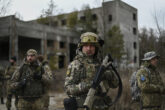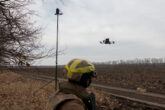May 20, 2021
The Pentagon needs a plan to get punched in the mouth
“Everyone’s got a plan until they get punched in the mouth,” Mike Tyson said of disrupting opponents’ thinking through violence. Today, China and Russia channel Tyson through strategies that attack U.S. military information and command systems and exploit the resulting cognitive and psychological disruption. They believe that degrading these systems and functions will turn traditional U.S. strengths into weaknesses and allow them to win limited, local conflicts, or deter the United States from fighting altogether. This belief isn’t misplaced.
The Pentagon will soon unveil its solution to this challenge, Joint All-Domain Command and Control, which envisions an overarching network-of-networks enabled by artificial intelligence and cloud data storage. In theory, this hyper-network will restore U.S. information dominance by linking every sensor to every “shooter” across vast theaters to deliver converging effects from dispersed forces, thereby presenting multiple insoluble dilemmas to Chinese or Russian armed forces.
Put simply, the Pentagon needs a plan for getting punched in the mouth.
After 30 years fighting below its so-called weight class, the Pentagon has largely forgotten how to deal with opponents that can disrupt its information and command-and-control systems. U.S. armed forces desperately need a new network architecture, but this vision is simultaneously too ambitious, and not ambitious enough. China and Russia have spent decades developing capabilities and operational concepts to disrupt U.S. information and command systems in space, cyberspace and the electromagnetic spectrum. Countless wargames, simulations and historical lessons suggest these domains will be highly contested, and systems operating within them will be heavily degraded. Regaining the information dominance U.S. forces enjoyed during the post-Cold War era is a chimerical goal. Instead, the Pentagon should aim for degradation dominance: operating effectively enough with degraded systems. Put simply, the Pentagon needs a plan for getting punched in the mouth.
Read the full article from C4ISRNET.
More from CNAS
-
Defense / Transatlantic Security
When Defense Becomes Destruction: Austria-Hungary’s Mistake and Ukraine’s RiskThis article was originally posted on War on the Rocks. The southeastern Polish city of Przemyśl, with its elegant 19th century Habsburg-era train station, remains one of the ...
By Franz-Stefan Gady
-
Defense / Transatlantic Security
Ukraine’s Catch-22 MomentThis article was originally published in the Financial Times. In Joseph Heller’s wartime classic, Catch-22, the protagonist Yossarian seeks out the US army surgeon Doc Daneeka...
By Franz-Stefan Gady
-
CNAS Insights | Budgetary Own Goals Undermine “Speed and Volume”
On November 7, Secretary of Defense Pete Hegseth laid out a plan to overhaul the Department of Defense’s (DOD’s) acquisition system. Placing an emphasis on delivering new capa...
By Philip Sheers, Carlton Haelig & Stacie Pettyjohn
-
Drones: Who Is Making the New Weapons of War?
From Ukraine and Russia to Gaza and Sudan, drones have become a key weapon of war. Which companies are making them, and profiting from this rapidly expanding but controversial...
By Stacie Pettyjohn




